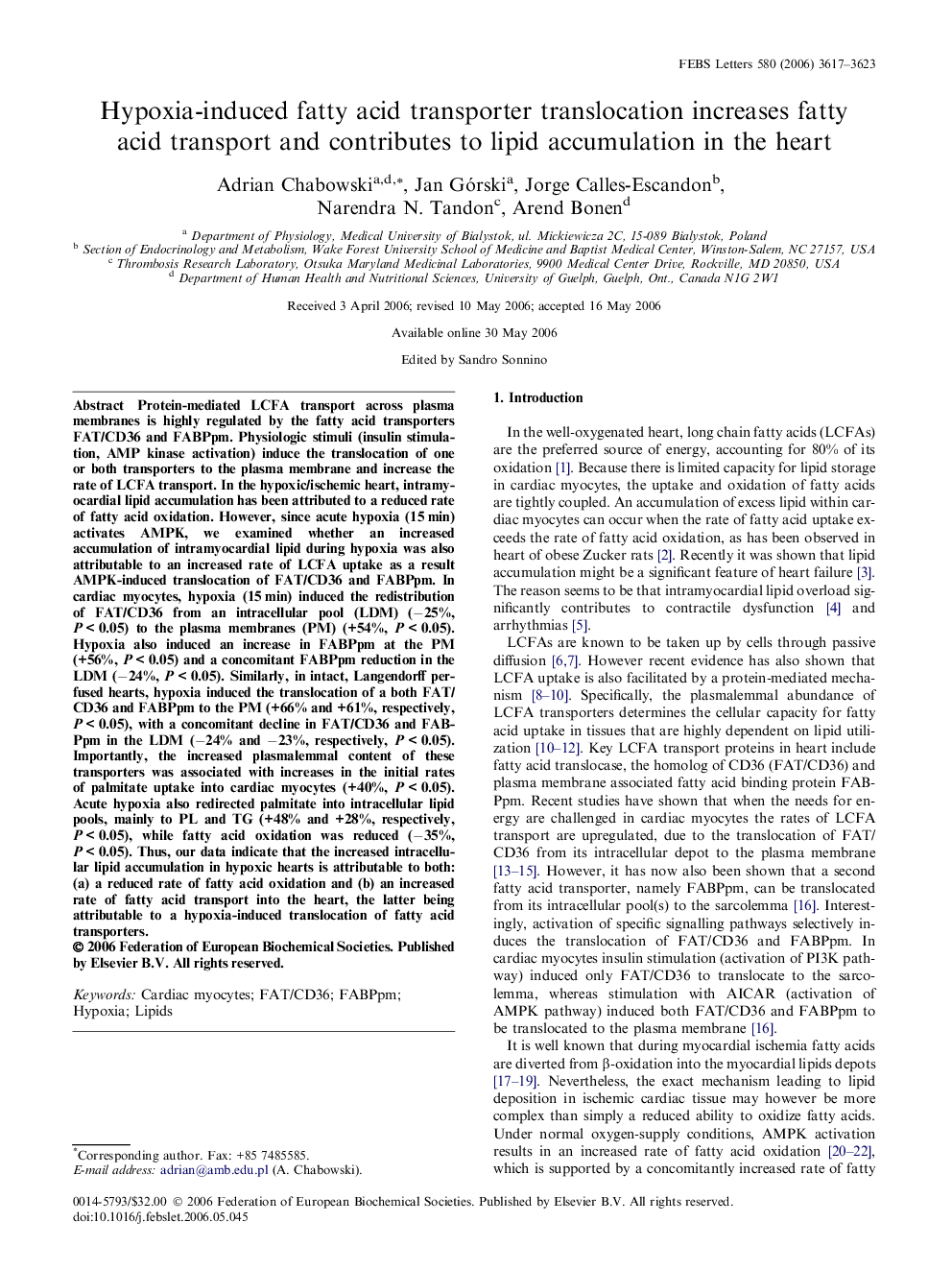| کد مقاله | کد نشریه | سال انتشار | مقاله انگلیسی | نسخه تمام متن |
|---|---|---|---|---|
| 2052372 | 1074229 | 2006 | 7 صفحه PDF | دانلود رایگان |

Protein-mediated LCFA transport across plasma membranes is highly regulated by the fatty acid transporters FAT/CD36 and FABPpm. Physiologic stimuli (insulin stimulation, AMP kinase activation) induce the translocation of one or both transporters to the plasma membrane and increase the rate of LCFA transport. In the hypoxic/ischemic heart, intramyocardial lipid accumulation has been attributed to a reduced rate of fatty acid oxidation. However, since acute hypoxia (15 min) activates AMPK, we examined whether an increased accumulation of intramyocardial lipid during hypoxia was also attributable to an increased rate of LCFA uptake as a result AMPK-induced translocation of FAT/CD36 and FABPpm. In cardiac myocytes, hypoxia (15 min) induced the redistribution of FAT/CD36 from an intracellular pool (LDM) (−25%, P < 0.05) to the plasma membranes (PM) (+54%, P < 0.05). Hypoxia also induced an increase in FABPpm at the PM (+56%, P < 0.05) and a concomitant FABPpm reduction in the LDM (−24%, P < 0.05). Similarly, in intact, Langendorff perfused hearts, hypoxia induced the translocation of a both FAT/CD36 and FABPpm to the PM (+66% and +61%, respectively, P < 0.05), with a concomitant decline in FAT/CD36 and FABPpm in the LDM (−24% and −23%, respectively, P < 0.05). Importantly, the increased plasmalemmal content of these transporters was associated with increases in the initial rates of palmitate uptake into cardiac myocytes (+40%, P < 0.05). Acute hypoxia also redirected palmitate into intracellular lipid pools, mainly to PL and TG (+48% and +28%, respectively, P < 0.05), while fatty acid oxidation was reduced (−35%, P < 0.05). Thus, our data indicate that the increased intracellular lipid accumulation in hypoxic hearts is attributable to both: (a) a reduced rate of fatty acid oxidation and (b) an increased rate of fatty acid transport into the heart, the latter being attributable to a hypoxia-induced translocation of fatty acid transporters.
Journal: FEBS Letters - Volume 580, Issue 15, 26 June 2006, Pages 3617–3623